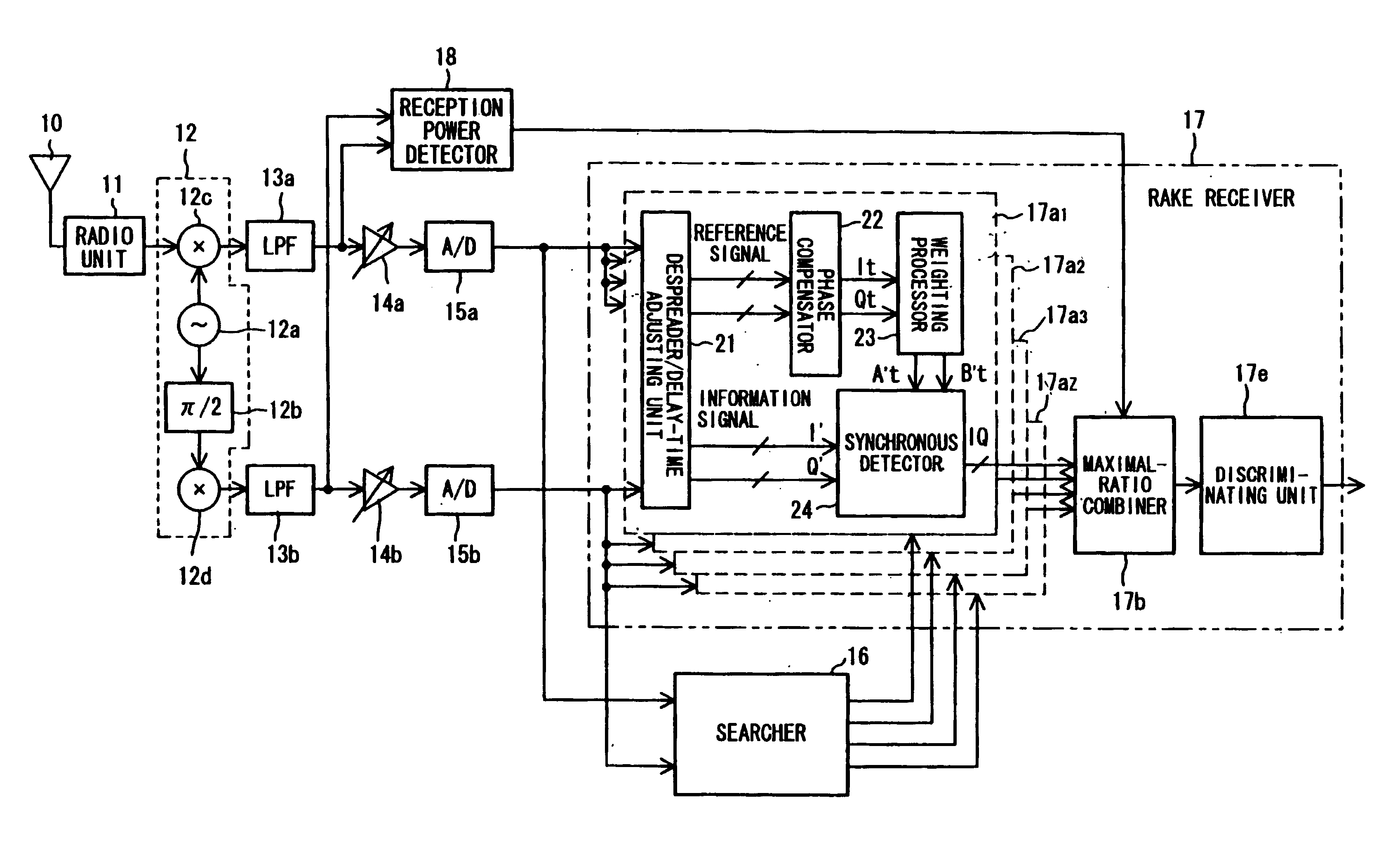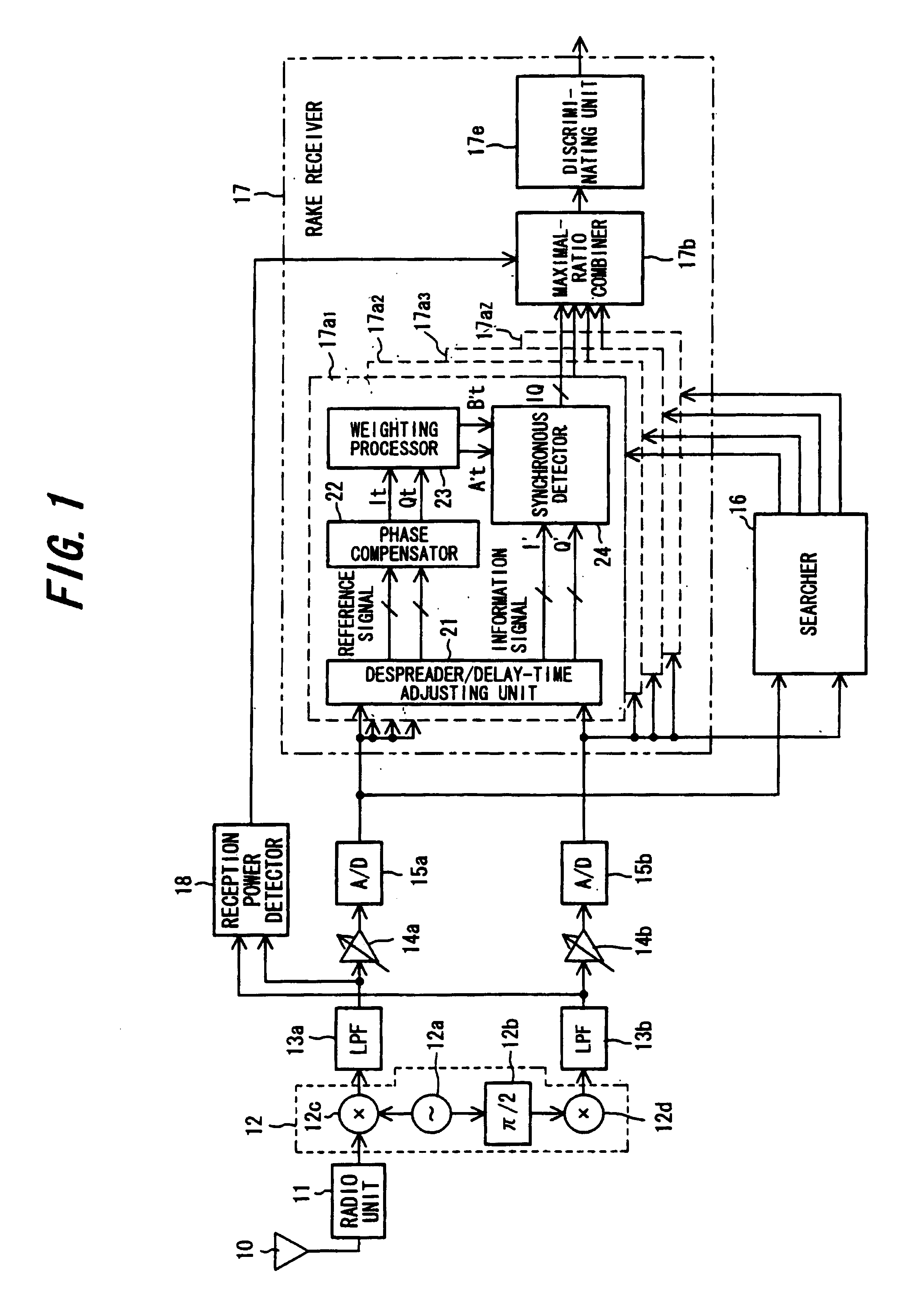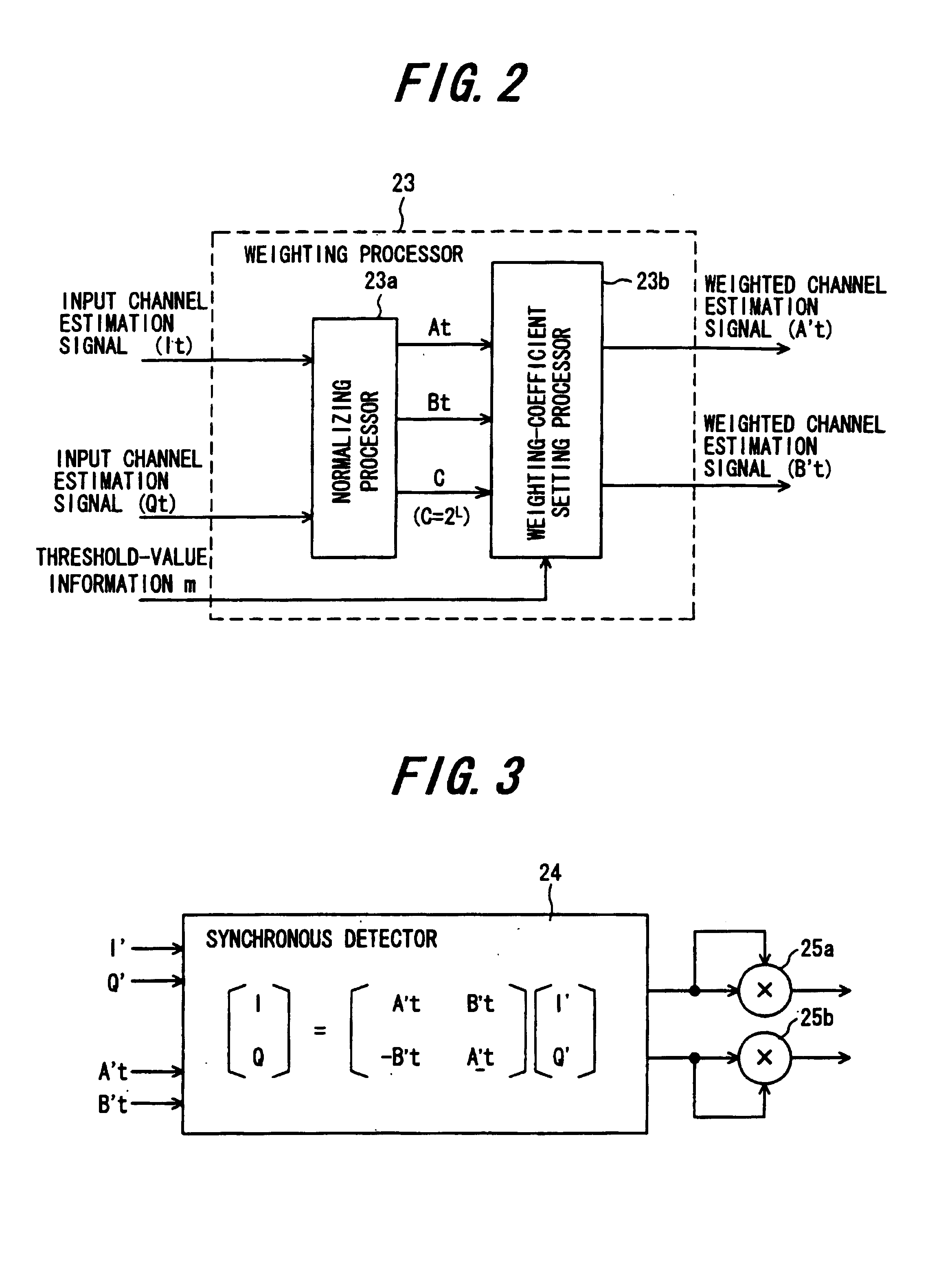CDMA receiver
a receiver and receiver technology, applied in the field of cdma receivers, can solve the problems of reducing difficult to achieve stable reception at maximum frequency, and delayed waves from distant high-rise buildings or mountains, so as to improve sensitivity and receiver performance, reduce the weighting of paths, and reduce the transmission rate of symbols
- Summary
- Abstract
- Description
- Claims
- Application Information
AI Technical Summary
Benefits of technology
Problems solved by technology
Method used
Image
Examples
first embodiment
[0079](a) First Embodiment of Weighting Processor
[0080]FIG. 9 is a diagram showing the structure of a first embodiment of the weighting processor 23 of FIG. 1. This sets a weighting coefficient using a pilot signal. The phase compensator 22 and weighting processor 23 are illustrated. FIG. 10 is a flowchart of processing for generating a weighted channel estimation signal.
[0081]The phase compensator 22 averages the voltages of the I- and Q-components of the pilot signal over one slot and outputs channel estimation signals (It, Qt) (step 101). The normalizing processor 23a includes multipliers 31, 32 for performing the operations It2, Qt2 when the channel estimation signals (It, Qt) are input thereto, an adder 33 adds It2 and Qt2, a multiple deciding unit 34 finds the multiple C that satisfies the following equation:
C2·(It2+Qt2)=1 (1)′
and a normalization arithmetic unit 35 finds the normalized channel estimation signals At, Bt (At2+Bt2=1) in accordance with Equation (2) (step 102).
[0...
second embodiment
[0084](b) Second Embodiment of Weighted Processor
[0085]FIG. 12 is a diagram showing the structure of a second embodiment of the weighting processor 23 of FIG. 1. In order to simplify the circuitry, this embodiment is such that the absolute values of the It and Qt components are calculated and the multiple C is decided in approximate fashion utilizing the average of the absolute values.
[0086]The phase compensator 22 averages the voltages of the I- and Q-components of the pilot signal over one slot and outputs channel estimation signals (It, Qt), and absolute-value calculation units 36, 37 of the normalizing processor 23a calculate absolute values |It|, |Qt| when the channel estimation signals (It, Qt) are input thereto. The adder 23 adds |It| and |Qt| and the multiple deciding unit 34 finds the multiple C that satisfies the following equation:
C·(|It|+|Qt|) / 2=1 (6)
That is, the multiple deciding unit 34 finds the multiple C that makes the average of the absolute values equal to one. ...
third embodiment
[0087](c) Third Embodiment of Weighting Processor
[0088]FIG. 13 is a diagram showing the structure of a third embodiment of the weighting processor 23 of FIG. 1. In order to simplify the circuitry, this embodiment is such that the absolute values of the It and Qt components are calculated and the multiple C is decided in approximate fashion utilizing the larger of the absolute values.
[0089]The phase compensator 22 averages the voltages of the I- and Q-components of the pilot signal over one slot and outputs channel estimation signals (It, Qt), and the absolute-value calculation units 36, 37 of the normalizing processor 23a calculate absolute values |It|, |Qt| when the channel estimation signals (It, Qt) are input thereto. An absolute-value selector 39 outputs the larger of the absolute values as C′ and the multiple deciding unit 34 finds the multiple C that satisfies the following equation:
C·C′=1 (7)
That is, the multiple deciding unit 34 finds the multiple C that will make the larg...
PUM
 Login to View More
Login to View More Abstract
Description
Claims
Application Information
 Login to View More
Login to View More - R&D
- Intellectual Property
- Life Sciences
- Materials
- Tech Scout
- Unparalleled Data Quality
- Higher Quality Content
- 60% Fewer Hallucinations
Browse by: Latest US Patents, China's latest patents, Technical Efficacy Thesaurus, Application Domain, Technology Topic, Popular Technical Reports.
© 2025 PatSnap. All rights reserved.Legal|Privacy policy|Modern Slavery Act Transparency Statement|Sitemap|About US| Contact US: help@patsnap.com



